I have this friend. Well, I know him better than he knows me. And I’m not sure if I still call him my friend. Actually, I wish he would go away. Far away and quit writing, quit publishing, quit building furniture with hand tools and just leave me alone…
I’m talking about the hand tool fanatic, prolific writer, blogger and furniture builder Christopher Schwarz. He’s the co-owner of Lost Art Press, an old-school publishing house that is putting some great, old books back into print as well as pumping out some of the best new content in woodworking from some of the greats in woodworking today; from Peter Galbert’s upcoming book to Matt Bickford, Roy Underhill and many others.
Willie and I got to meet Chris at a Lie-Nielsen show at Highland Woodworking in Atlanta.
Christopher Schwarz wrote two books that I wish he hadn’t. If he hadn’t written them, my life would have been a lot simpler. No scrounging pennies for rusty old tools I’ve spent endless hours scrubbing rust off of, no catastrophic withdrawals from the bank for checks written to some guy in Maine called Tommy Lie-Nielsen, no litany of late nights in a shop slaving away with a hand plane in an era of electric power tools, no……well, let me start over.
Chris wrote a book called The Anarchist Tool Chest. I had heard about the book, bought it not long after it came out, and then devoured it on the spot. It’s the only modern treatise of any value about the storage of hand tools, and more importantly, the book includes a first-class, real-life, necessity-driven list of the tools you need to build simple furniture by hand. Not a list of all the latest power tool gadgetry that allows you to build furniture as if you were a machinist and after you spend $50,000 dollars setting up a shop, but a list of about 50 hand tools you need to build basic furniture. His philosophical thrust (the Anarchist part of the Tool Chest) rings true with my sentiments about sustainability: the simple act of buying a few hand tools, building a chest to protect them and organize them, then building the things your family needs is a kind of anarchy in light of today’s Chinese produced, cheap goods that fill our lives. He outlines a full size chest in his book, as well as a traveling version. Chris was so compelling, I built both chests!
If that wasn’t enough, he’s writing a second book he calls The Furniture of Necessity. This book isn’t published yet, but Chris leaked out some of his writing on the ubiquitous six board chest that fills every antique shop from America to England. Again, his compelling writing, his anarchy and my thoughts of sustainability converged and I couldn’t help but head to the lumber store for some 5/4 Poplar to build my own blanket chest.
I’ve forgotten how many endless hours I spent sawing dovetails, flattening lumber with a jack plane, tweaking and fitting six sliding tills in the tool chests, installing hardware, uninstalling hardware, finishing, finishing and a little more finishing, but all this tongue-in-cheek aside, these three chests have been liberating, therapeutic, and simply fantastic!
There is no way to work at any craft without well tuned tools, stored in an organized manner. It’s foolish to try otherwise. The English styled tool chest fits the need remarkably well.
And for all of our sheetrock closets filled with the latest and greatest plasticized, particle-board organization schemes, a simple blanket chest filled with a few linens for our home is a breath of fresh air.
Here are a few pictures and details about the three chests.
The full size tool chest:
I dropped the saw till all the way to the bottom of the chest and gained a fourth sliding till – two deep and two shallow. I really like this change. I still have all the accessibility I need to get to everything, but I feel like I get more organized space with that extra, deep till.
Here are the top two tills – miscellaneous measure tools, coping saw, hammers, block plane, shoulder plane, side rabbeting planes and scratch beading tool:
Here is the third till – a couple of egg beaters and bits, two braces, my router plane:
And here’s the fourth – sharpening tools for saws, odd sharpening stones, extra plane irons:
I put a tool rack on the front and back wall. I got away with this because I made my tool chest slightly wider than Chris suggested. I think this is some very valuable room to add. And, I put some 3″ casters on the chest which acts like a toe-kick, so I don’t have any trouble reaching into the bottom, back corner even with the extra width.
Front tool rack:
I liked my chisel rolls before the tools chests, but once I had the chest, they seemed unnecessary. So rather than ditch them and make wooden racks for my chisels, I just hung the rolls. This shot also shows the bottom of the tool chest where I store my bench planes and a Stanley #46 Combination plane:
Here are the casters:
Another shot of the bottom of the chest shows the rest of the planes and my saw till:
The traveling size tool chest: Chris gives measurements for this chest as an option to build for hauling around almost all your tools. I built this version and have filled it with tools for green woodworking like spoon carving and chair-making. I put a chisel roll on the back wall and two sliding tills; besides that, the bottom of the chest is just a cavern for all the odd shaped tools involved in green woodworking.
Here are the tills and chisel roll:
Everything else was pretty much as Chris described a traditional tool chest out to be, save one more major change that I incorporated in both chests. I broke some wood movement rules and put the dust seal skirt all the way around the lid of the chests, and I gained a very satisfactory, air-tight fit. So far, the chests have been through the end of a winter, a wet spring and a hot summer, so here’s hoping I continue to get away with the risk.
Here are two shots of the wrap-around dust seal:
On the blanket chest, I stayed pretty simple: one straight piece of moulding on the front of the chest, thumbnail edge on three sides of the lid, and some simple, hand-hammered hinges. I also used these traditional nails to put the carcass together. I didn’t want to pay for nice hand wrought chain so I used some I had. It was bright and shiny so I scuffed it with steel wool and then cold blued the chain and screws before I installed it.
Here’s the chest with the hardware installed and the woodworking done:
And now finished with black milk paint:
I used milk paint on all three chests. Two to three coats of milk paint, then two to three coats of oil, then steel wool and wax.
There is something immensely satisfying to own a kit of tools with which I can provide for some of the most basic building needs of my family. A tool chest is just a box really, but there is comfort in knowing my tools can be well cared for, ready to pass on to my son one day.
I have the blanket chest in our bedroom and it’s quite a feeling to enjoy the simple beauty of hand work and old-time finishes on a piece of time-tested furniture design, doing something useful and taking me one step away from dependence on some corporate, greed driven, government-controlled machine…
My city seems to have more and more country roads; how about yours?
So, thanks, Chris. The world needs more hand tools, tool chests, and blanket chests; more handmade furniture of necessity!


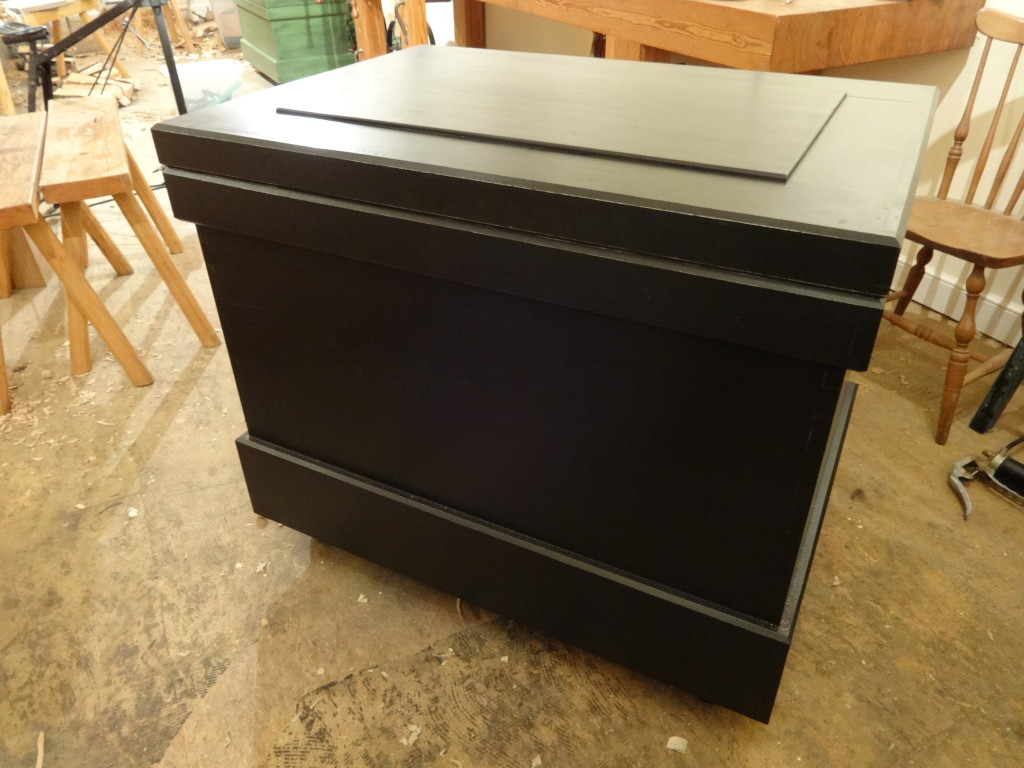
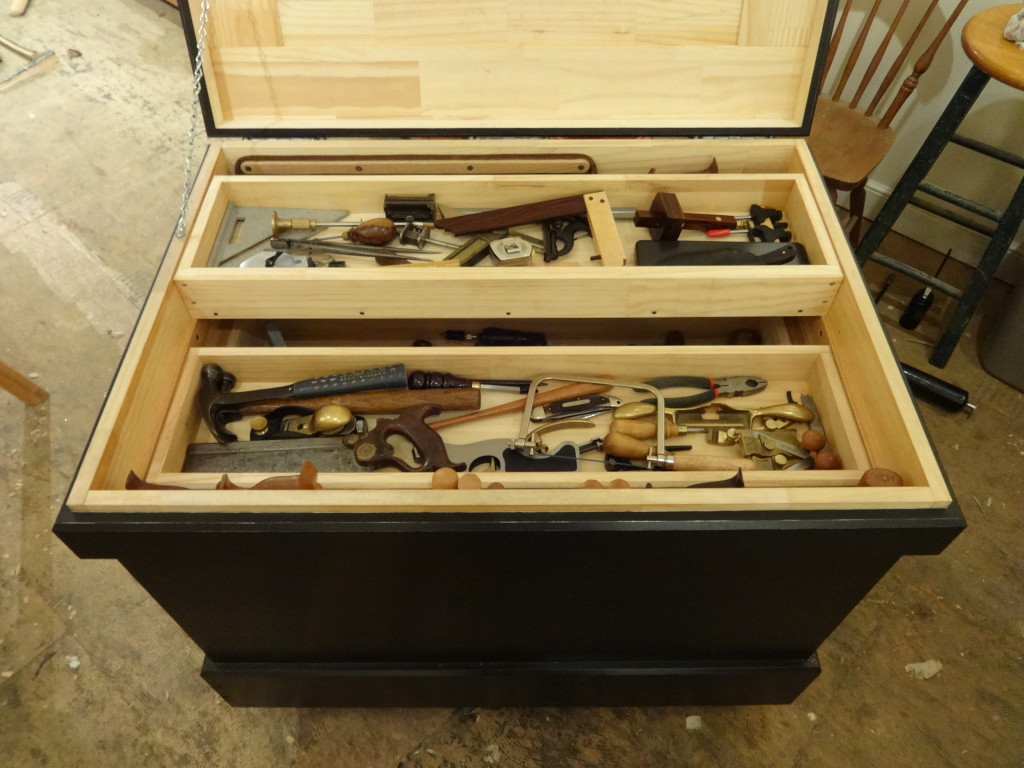
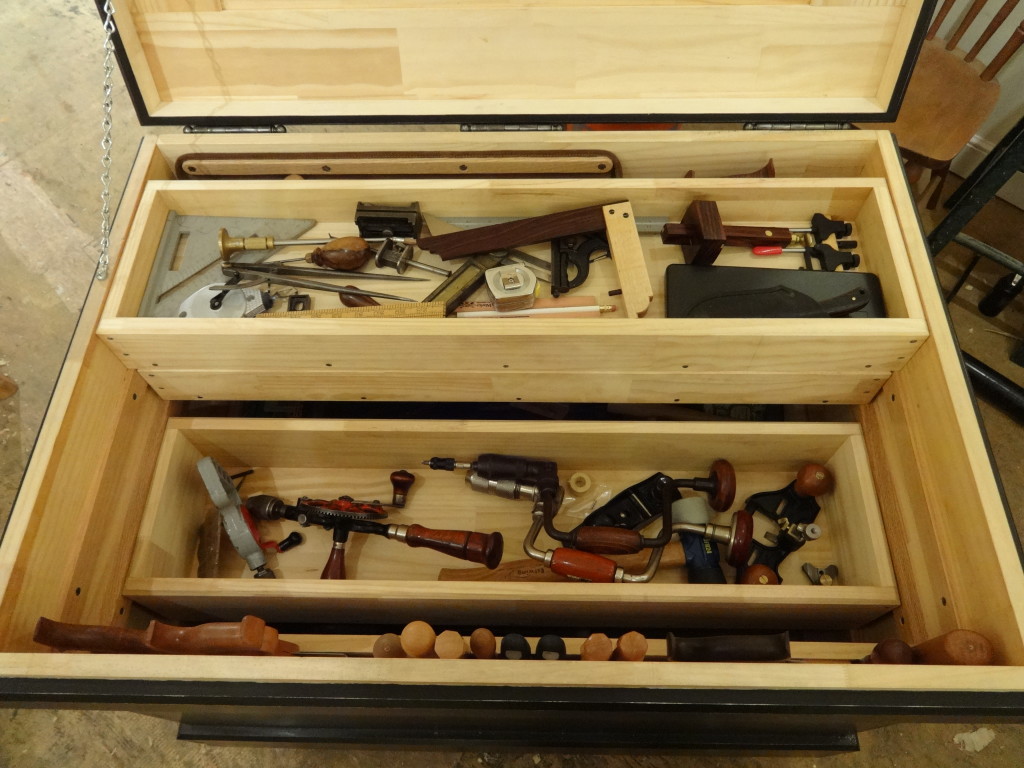
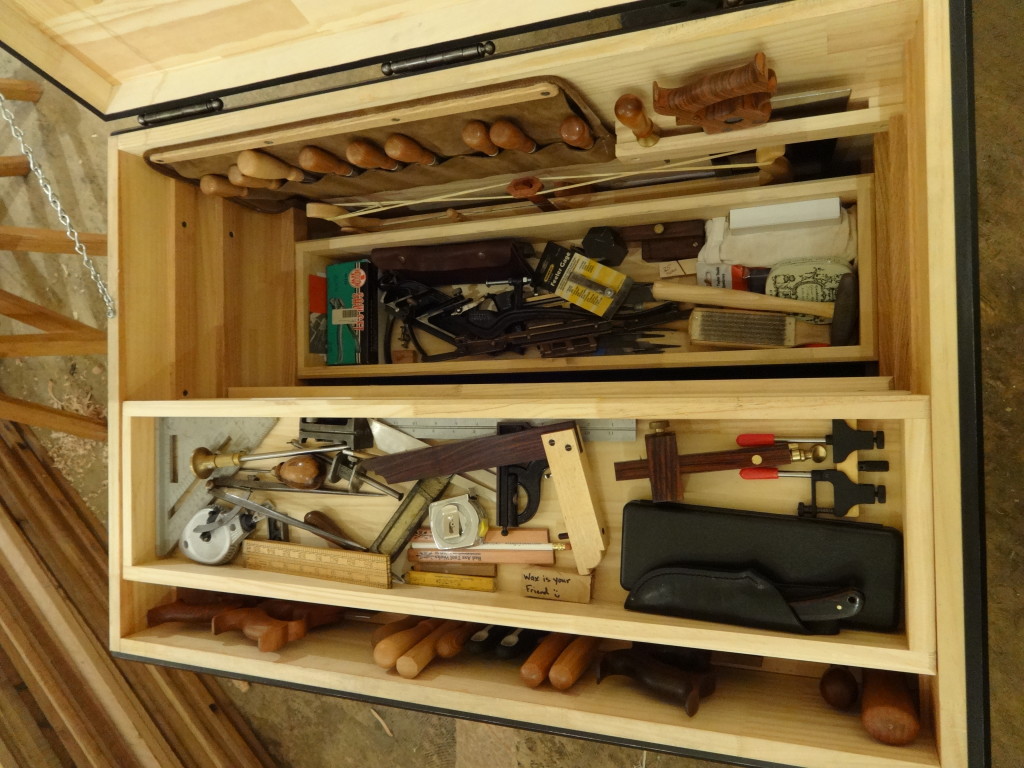
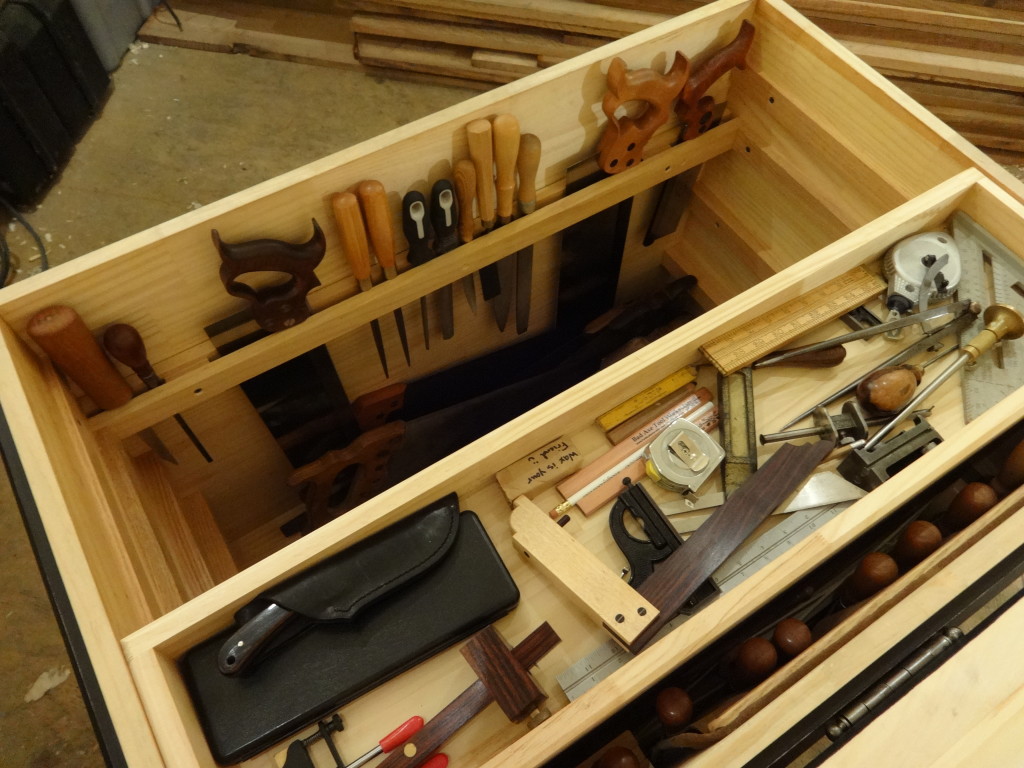
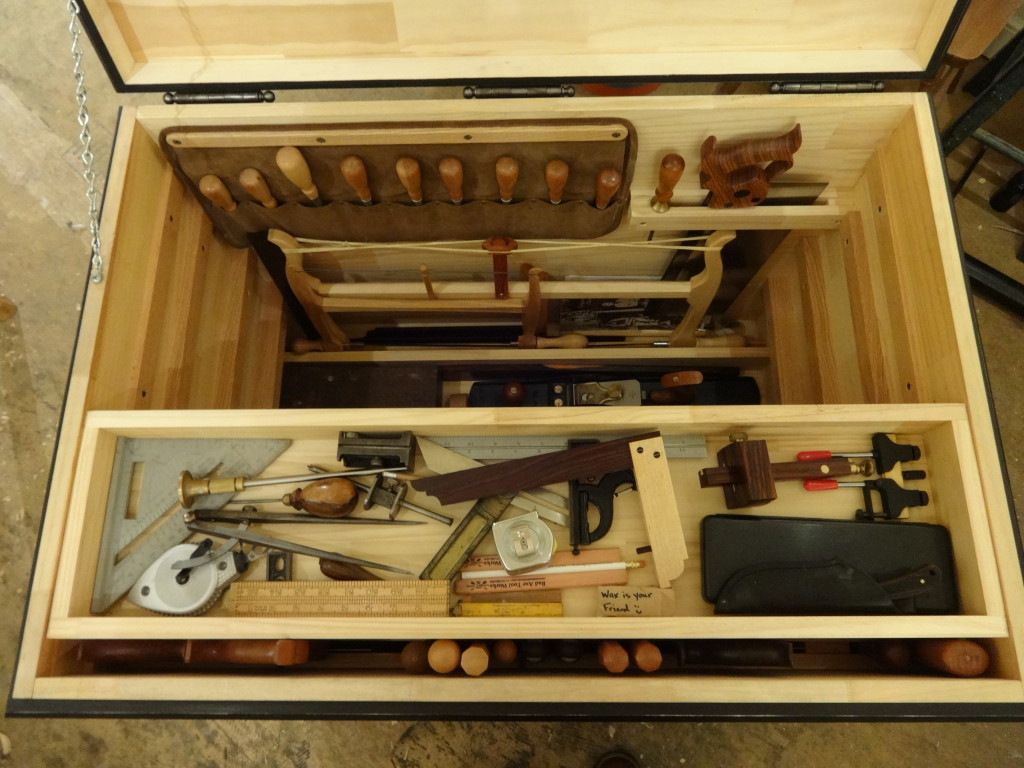
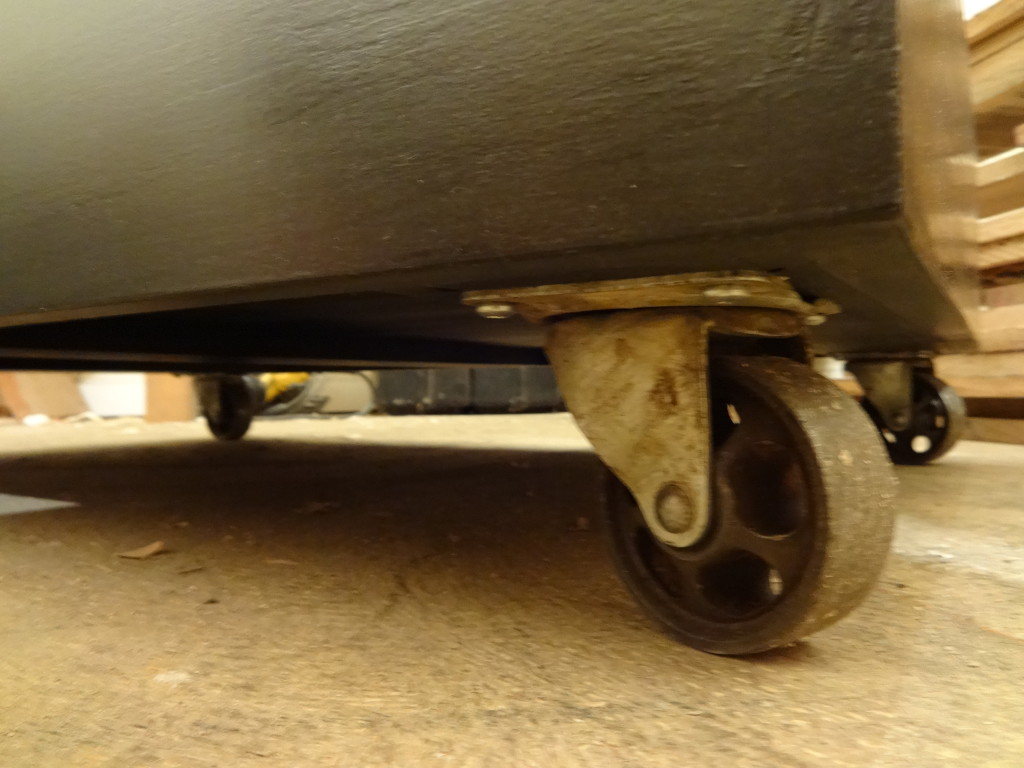
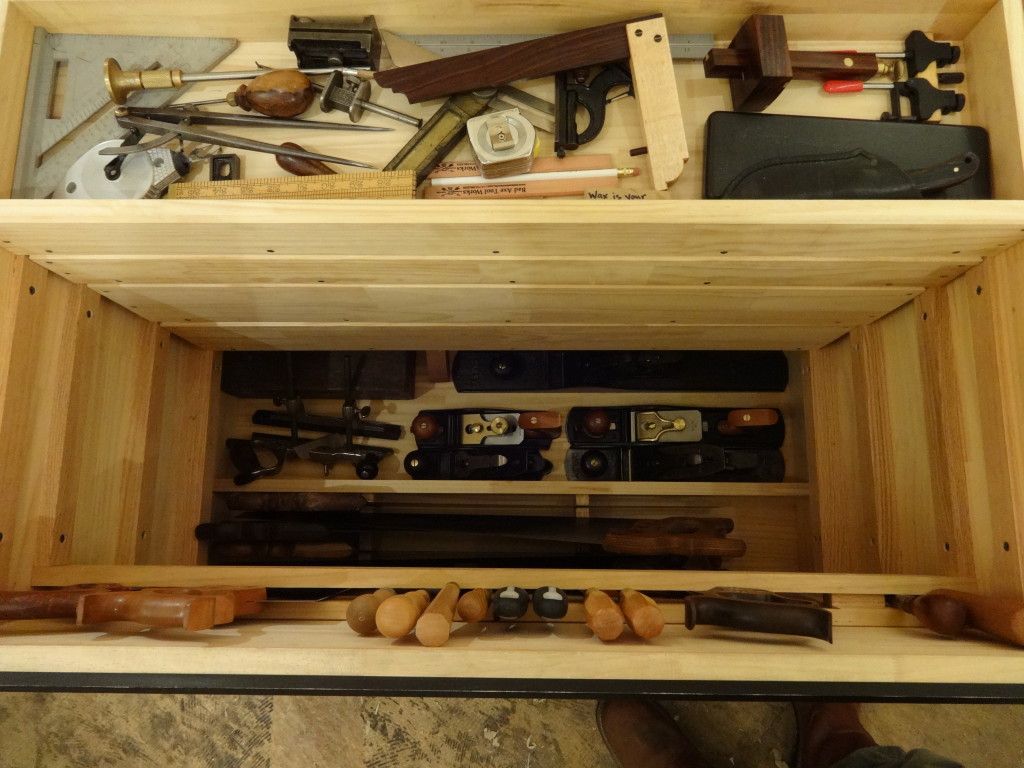
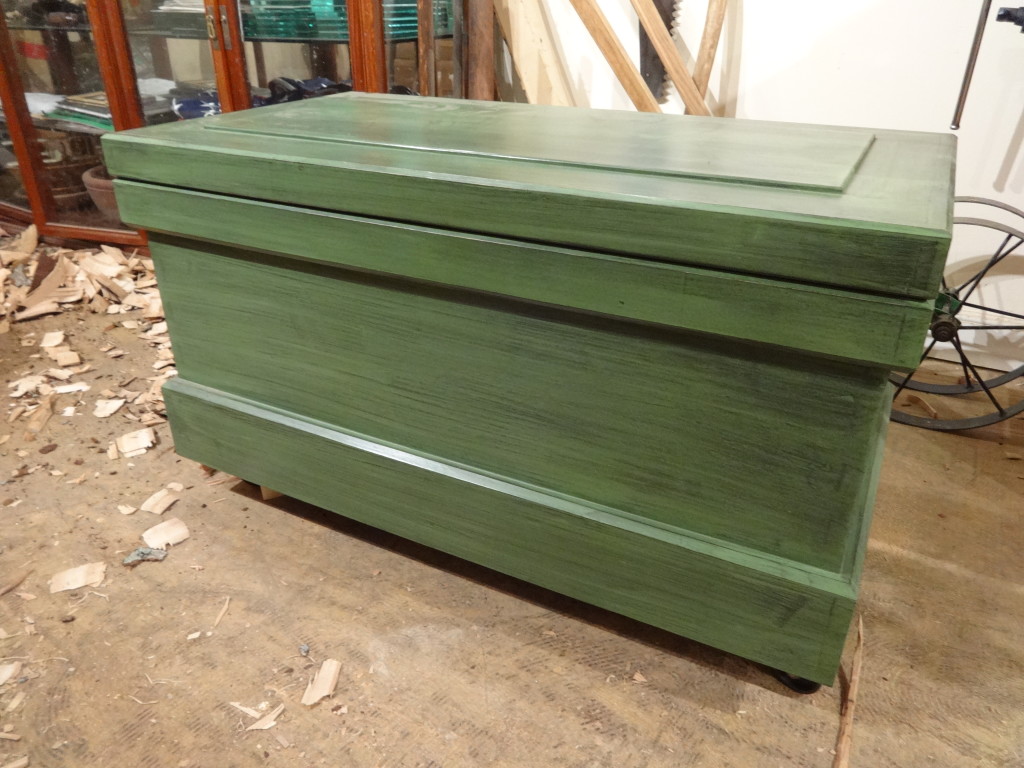
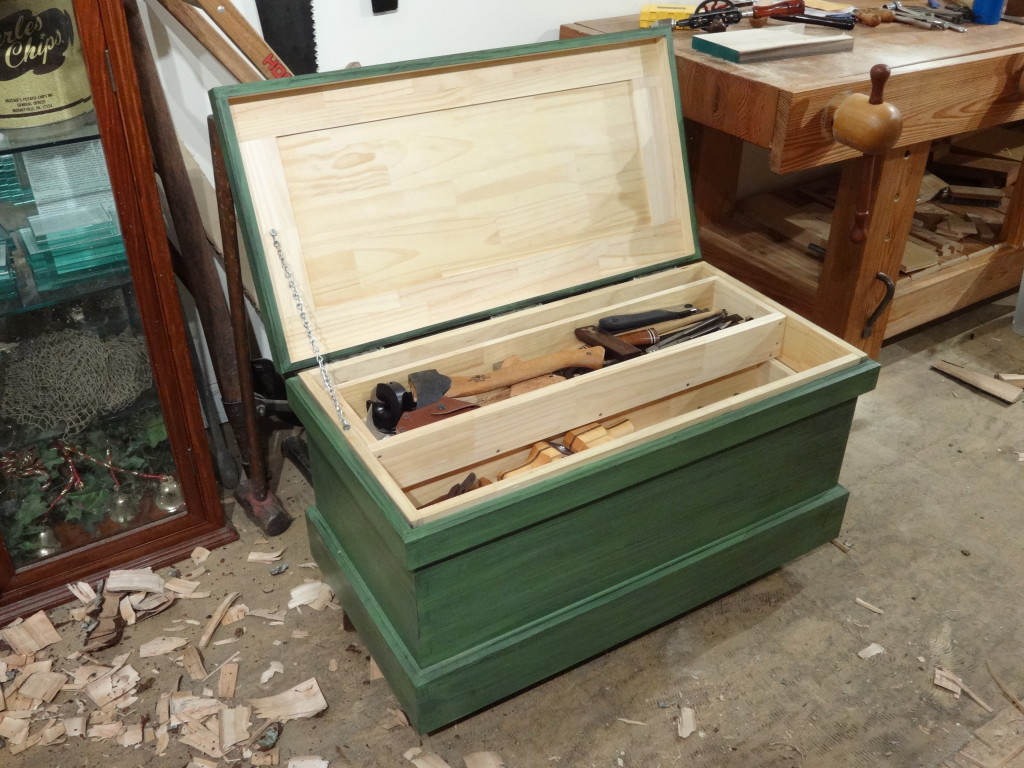
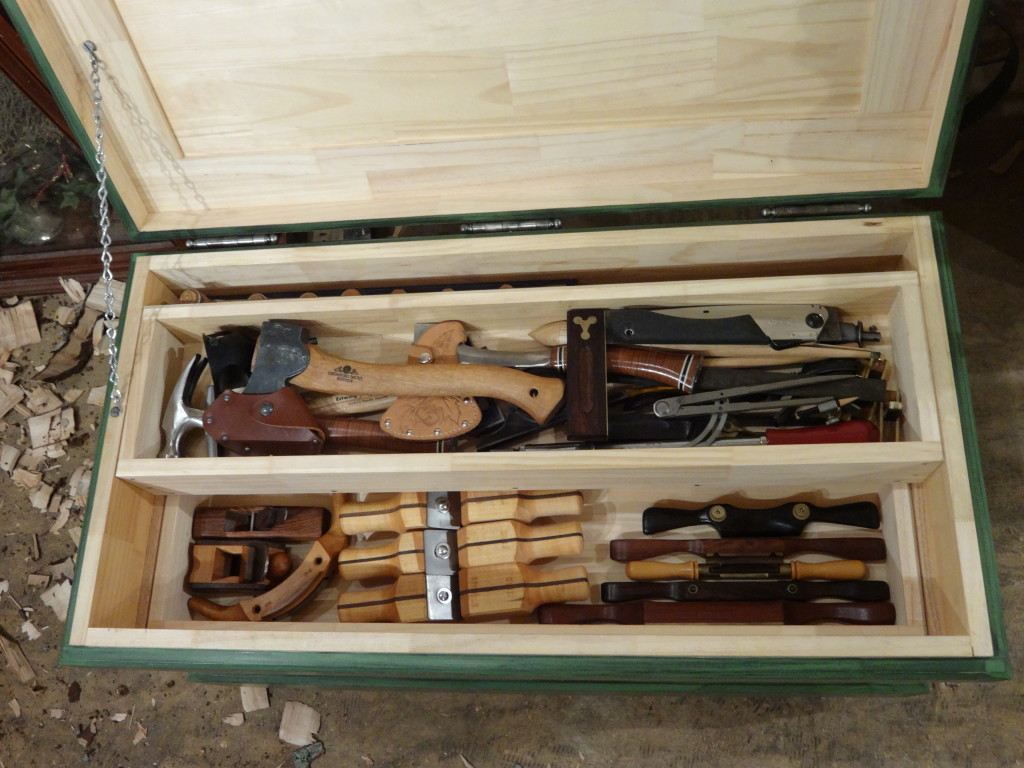
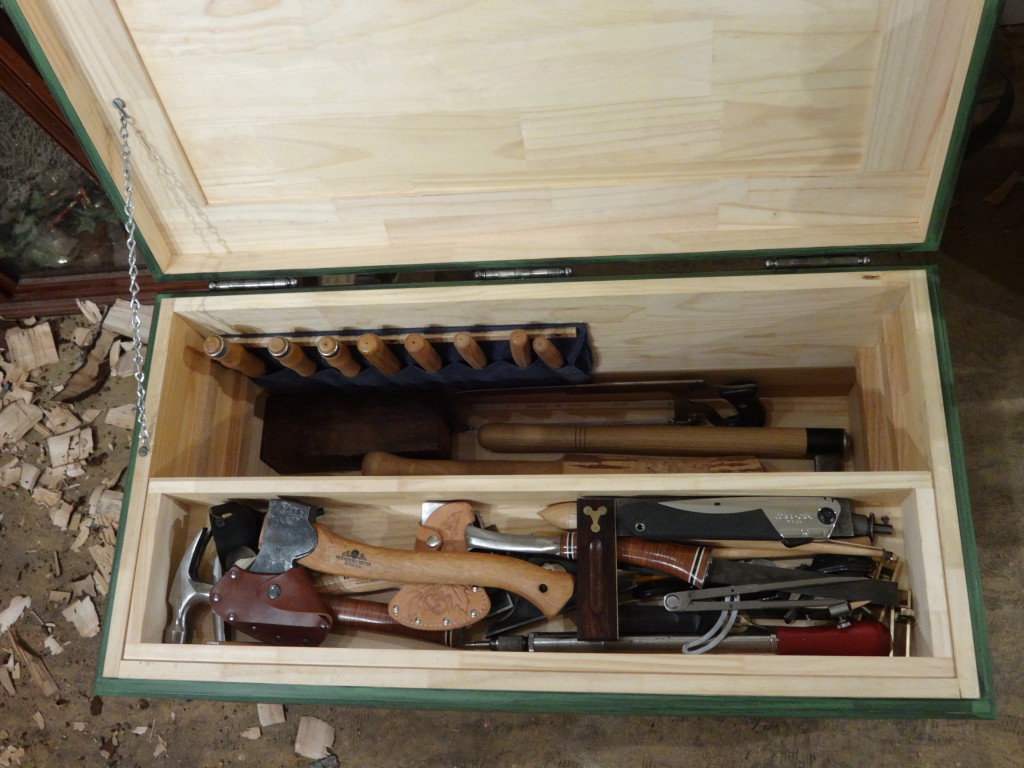
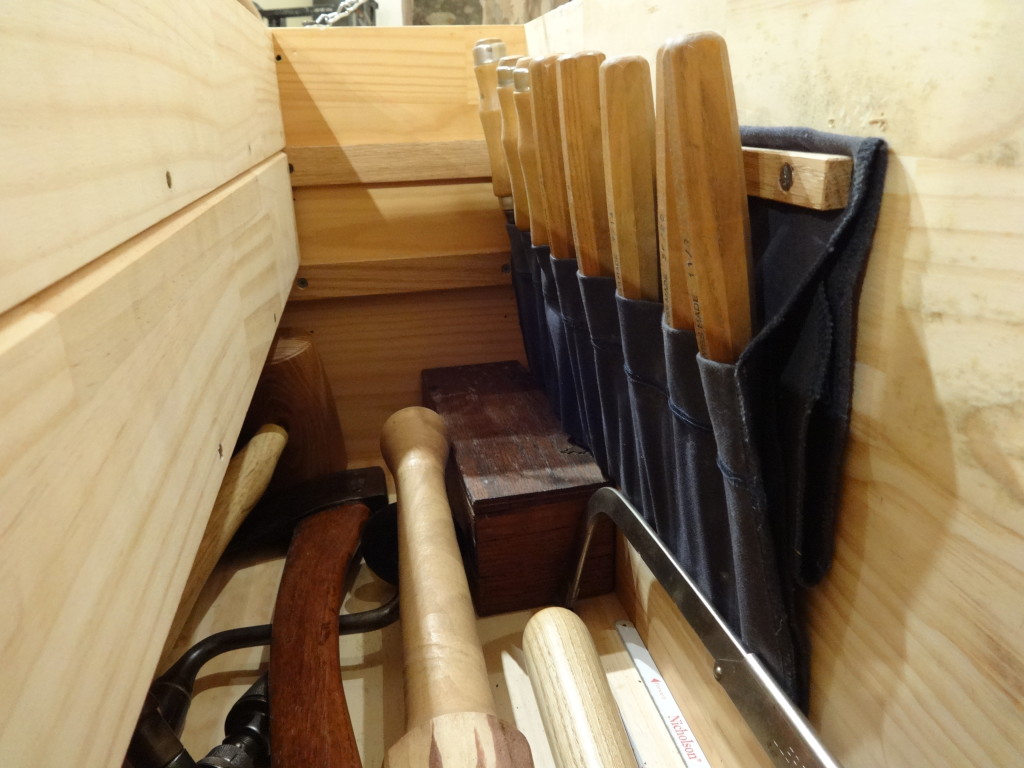

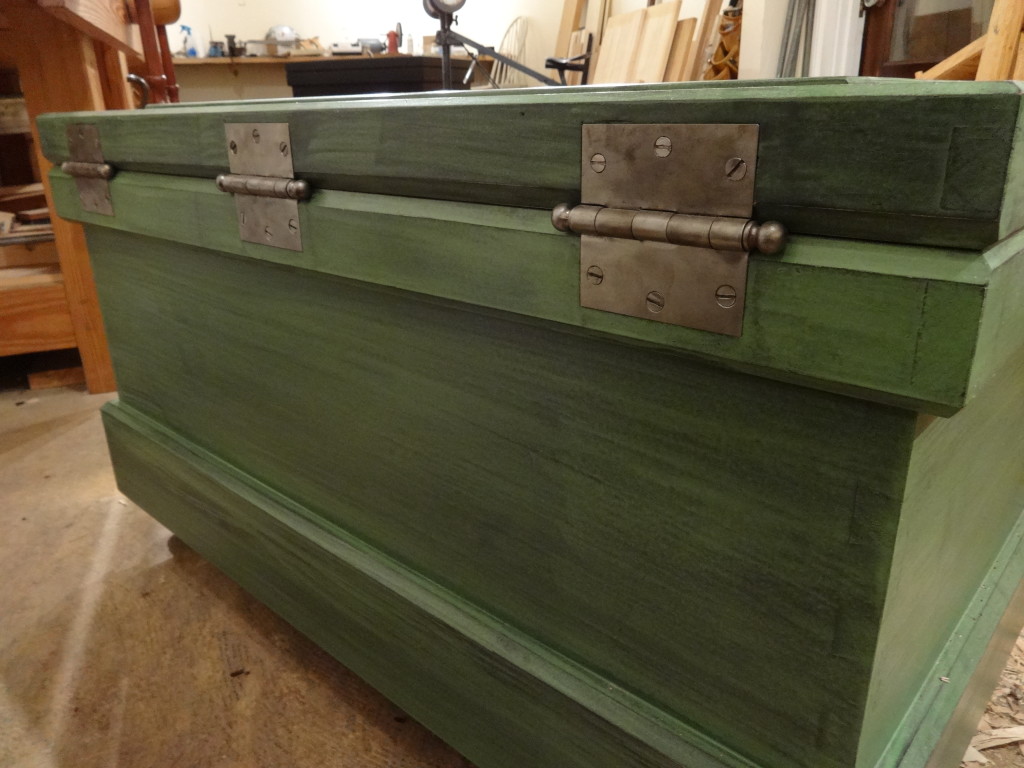
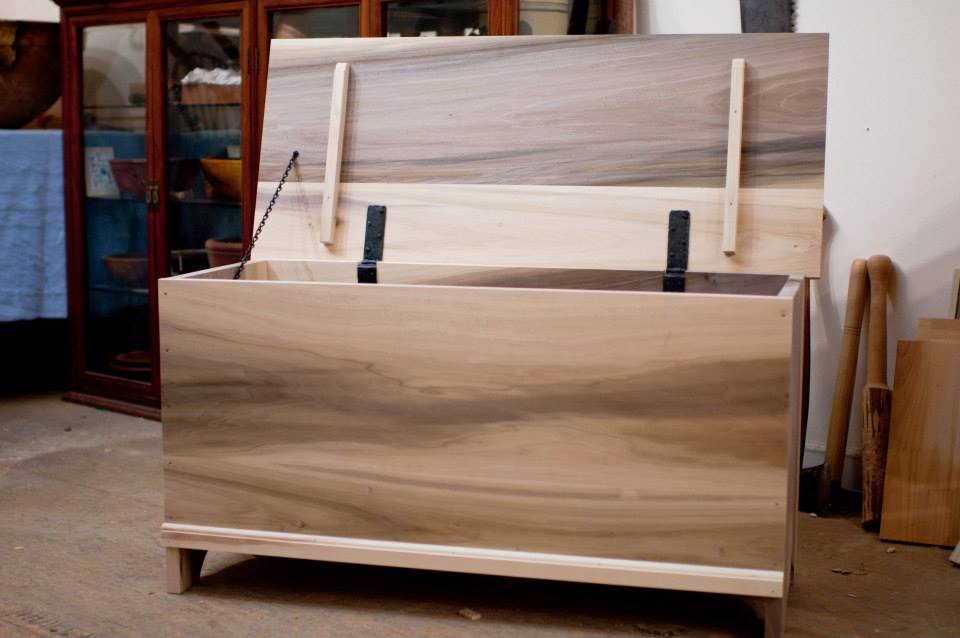
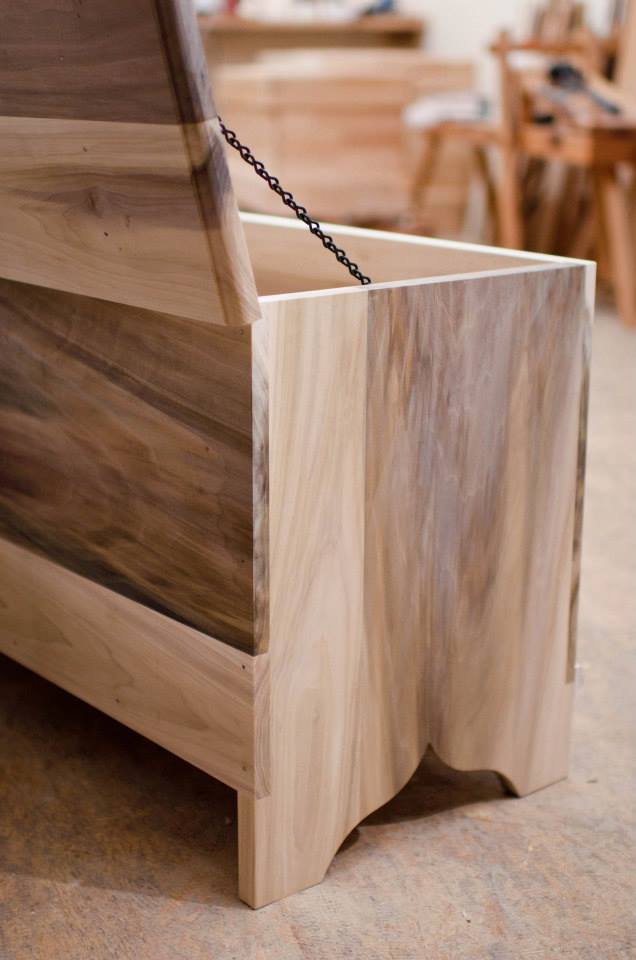

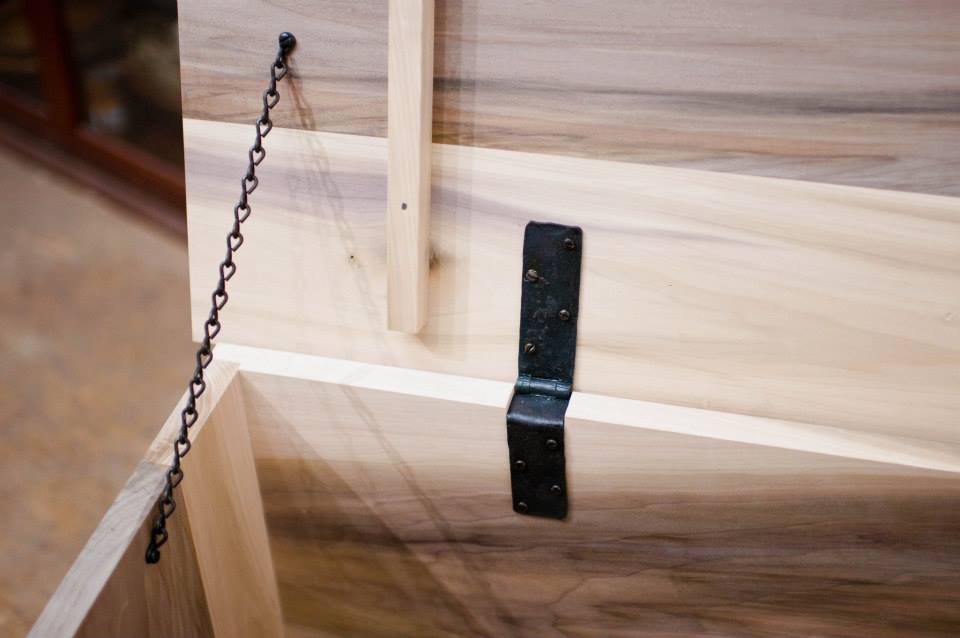
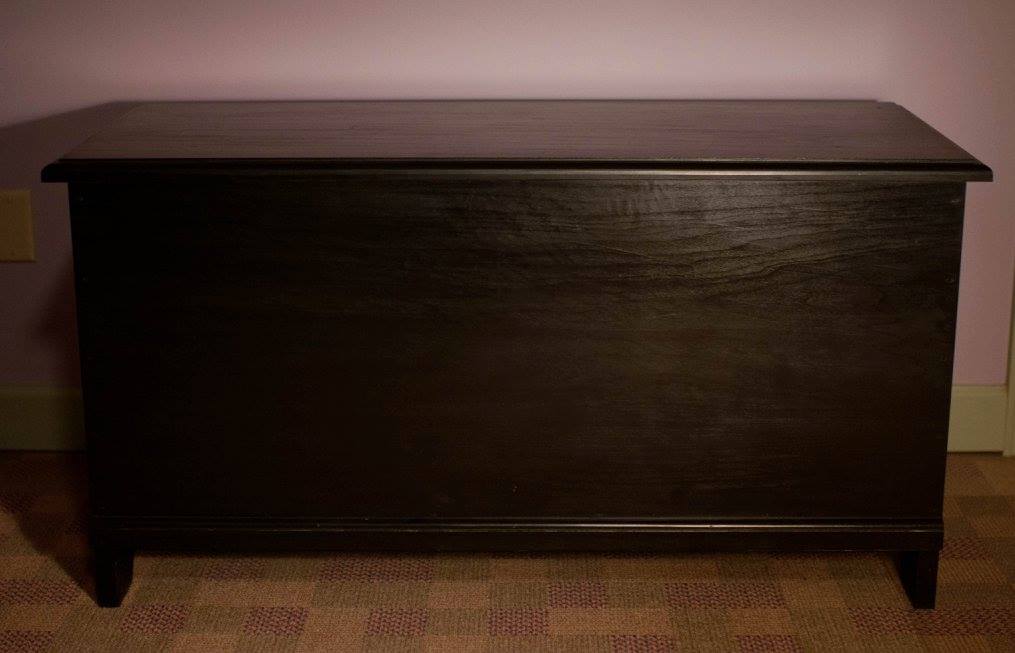
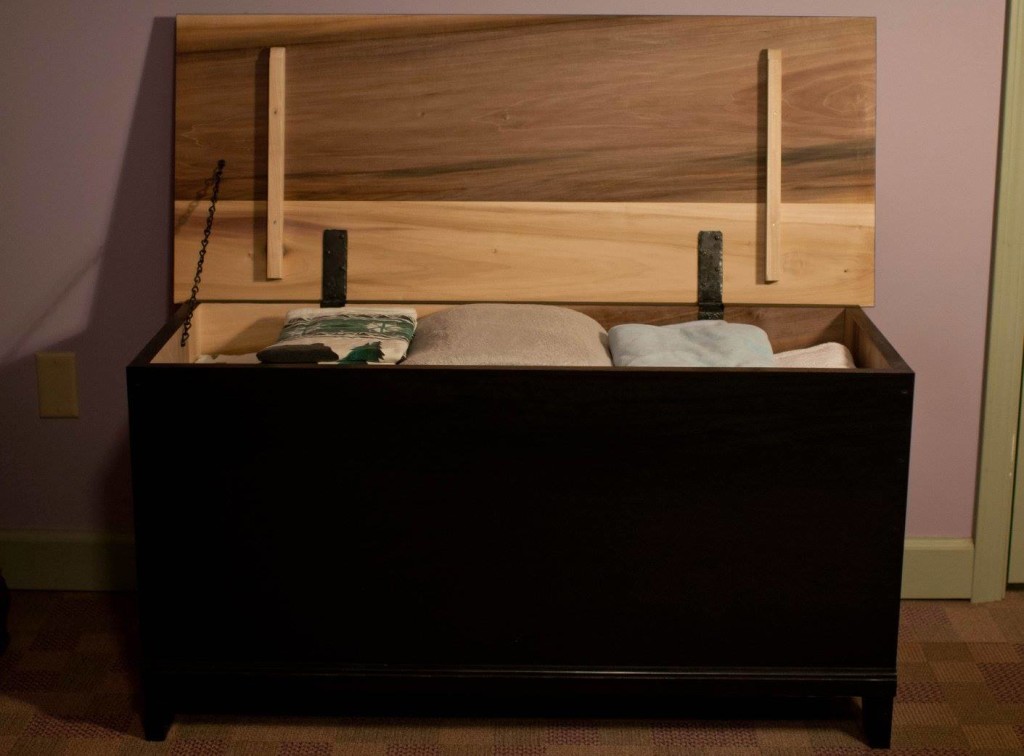
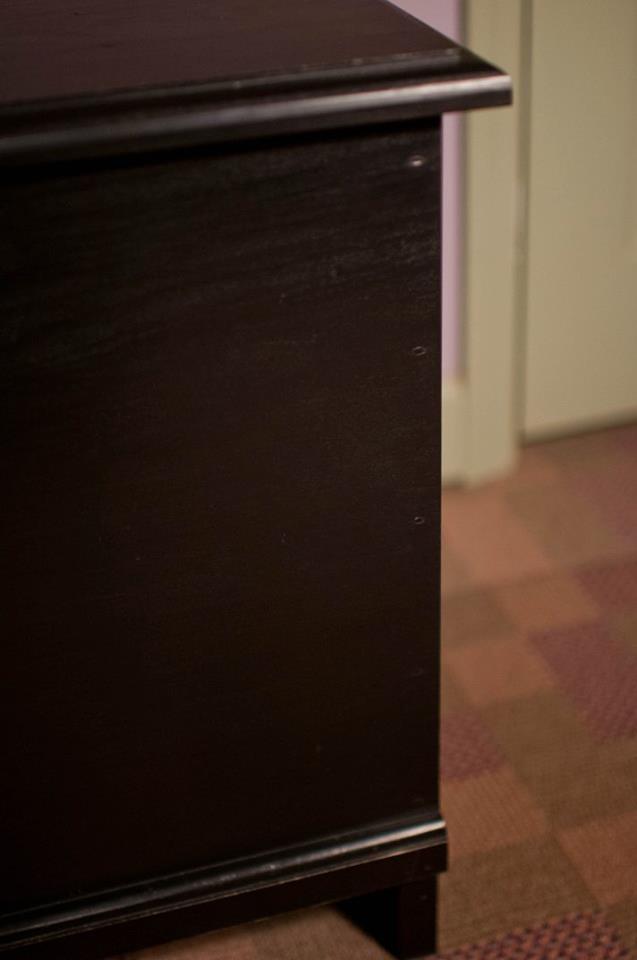

David, this is an inspiring piece of writing! You are quite a fine writer and also – obviously – a very skilled craftsman. Thank you for sharing this information and for including pictures of your beautiful work.
Thanks Roland! I love what I do; getting to work with hand tools is a privilege and fits nicely with the ever-changing amount of work on the farm.
David, looking at your chests takes my breath! What an amazing artist you are! Thank you for sharing this whole story with me.
Glad you enjoyed them Sharon. It was a long winter’s project, but I’m thoroughly enjoying the tool chests in my shop and we love the blanket chest in our room. Thanks!
Enjoyed this article. I like the changes that you made to the anarchist tool chest. I have read that book, and the Joiner and the Cabinet Maker. Eventually I will make a chest of my own.
Thanks, Zeke. I’ve read the Joiner and Cabinet Maker; it’s a great read too. I’d like to build the projects in that book, but I haven’t had the chance. I bet you’ll enjoy a tool chest like I am; it’s so nice to have a safe, clean place for all my tools.
My grandson always amazes me! There isn’t much he can’t do by turning a piece of wood (tree) into a thing of beauty. You all should see his bowls too.
Thanks Mammer!
We have a blanket chest in our bedroom as well. But one twist, drilled several large diameter holes in the back and use it as a clothes hamper at the foot of the bed. Works great to sit on as well. Very nice work. I enjoy reading your journeys with hand tools.
Thanks Laurence. That’s a great idea for a clothes hamper! I’d like to build another chest for the foot of out bed, but the way the bedroom is laid out it won’t fit right now.
Hey David!
You know, I been wanting to learn how to do some of these things. I would love to have a cedar chest or two! I’ve wanted to find someone with a lathe, so that I might build my own style bed! Is that so strange coming from a female? I don’t know where to begin, aside from finding someone who has a lathe, who can teach me. I’ve always done very well in Shop classes, from using hand tools, to Arch Welding – which really made for some tense moments with the guys! Thankfully, when I convinced them that I did well due to their help, everything went back to normal! It was actually quite funny. High School. What can you do?!
Your work is beautiful, and your family is blessed by God, through your talented hands, and the work they do.
Thank you for sharing!
Not quite how I typed that out, but I suppose it will have to do! Please excuse the typos/weird punctuation, and odd/absent paragraphs. Strange it posted that way…
Hey Polly,
Thanks for the comments. Hands on is definitely the way to go with woodturning. I’m afraid I don’t have the time right now for teaching; my shop isn’t setup very well for instruction either. Check with the American Association of Woodturners and they can give you information about local woodturning clubs, etc. and usually someone in the club will offer to teach folks how to turn.
Nice work! I’m in the process of reorganizing my tool storage and mini shop. I’ve looked at Schwarz’s designs before and considered the idea. My question always comes back to do all the tools fit? I wish I could see a video that shows the tool box operating. Your photos are one of the best examples of storage with this box I’ve seen.
Thanks Steve! The tool chests do have tons of room for storage. It’s very easy to fit the 50 or so tools you need for building basic furniture by hand into the large tool chest. I do think the changes I made: more width for a tool rack front and back, and dropping the saw till to the bottom so I gain a fourth sliding till really helps with storing a few more tools. I have a good many more tools than just what will fit in the full size chest, because I like to build more than just basic furniture – hence the smaller chest for chair-making/green woodworking. Nothing beats a solid workbench and a tool chest to work out of!
Beautiful work on those chests…. and an envious collection of tools!
I’ve been following the Lost Art Press blog for a year or so now, and Chris writes some excellent articles. I own a few of their books, but have the bad habit of having too much in my backlog to read. One of my goals this year is read a bit more and disconnect a bit from my digital world, so hopefully I’ll get to at least one Lost Art book!
Thanks Clayton. I’m thankful for my kit of tools; it’s taken years to collect, but it’s quite enjoyable to put them to work!
Ah, this sounds crazy as I’m trying to write a blog, but I’m trying to disconnect a bit too and just get in the shop to make stuff! Far more enjoyable really… Lost Art Press is really pumping out some good books; I was trying to buy and read as they came out, but I’ve given up for now. Thanks again.
Hello there
I just checked out your website doesyourcityhavecountryroads.com and wanted to find out if you need help for SEO Link Building ?
If you aren’t using SEO Software then you will know the amount of work load involved in creating accounts, confirming emails and submitting your contents to thousands of websites.
With THIS SOFTWARE the link submission process will be the easiest task and completely automated, you will be able to build unlimited number of links and increase traffic to your websites which will lead to a higher number of customers and much more sales for you.
IF YOU ARE INTERESTED, We offer you 7 days free trial
CONTACT US HERE ==> dindinaa421@gmail.com
Regards,
Best Seo Software